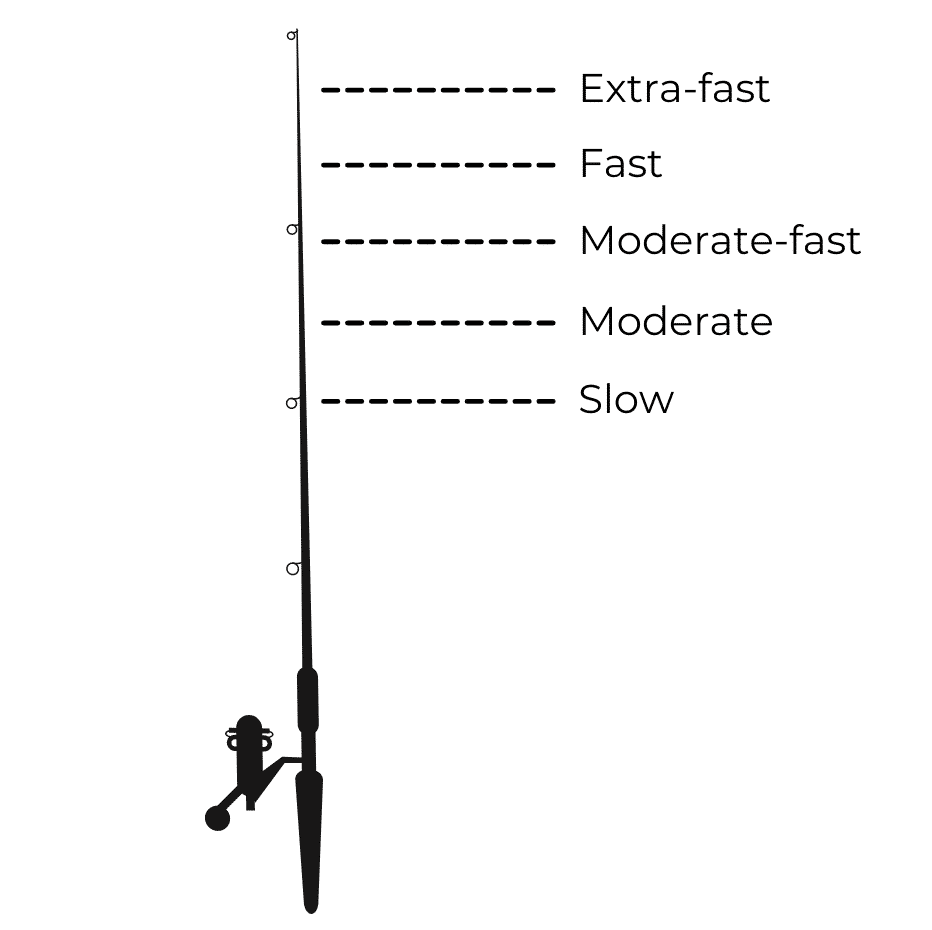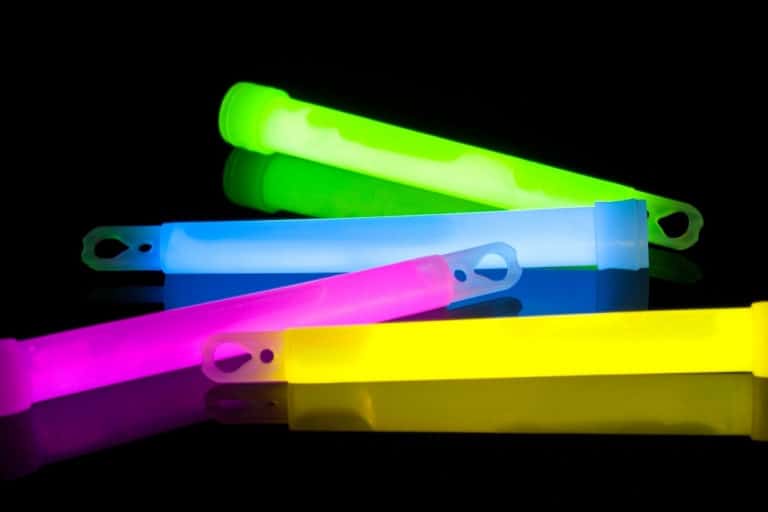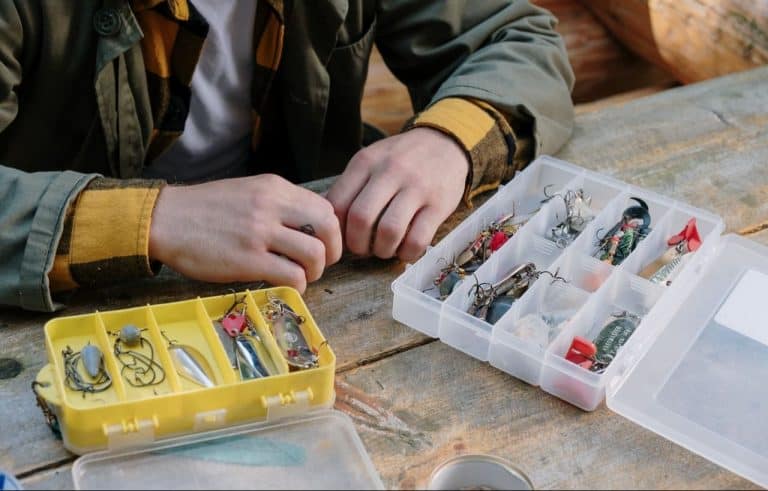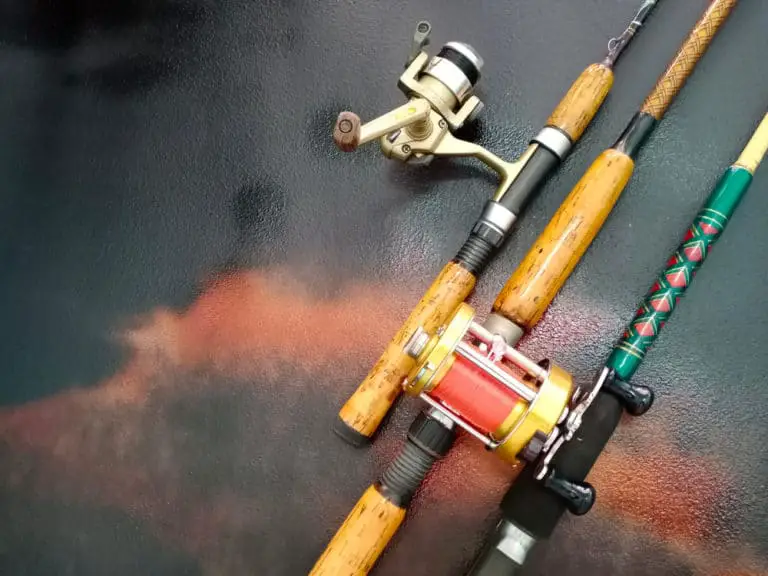Fishing Rod Power And Action Explained
Rods are available in a wide range of different fishing rod powers and action types, so it is important for the angler to decide before targeting a certain species or using a certain method, which style of rod would be best to use.
Companies manufacture a vast range of different types of rods, with some being designed to specifically target the many mini species that inhabit our coastline with the angler fishing ultra-light with tiny reels, small hooks, and fine line, while others are designed for using large reels and casting out heavy leads and baits a great distance from a beach.
Before correctly selecting the type of rod to use for a certain situation, the angler must consider the power that the rod has as well as its action.
Table of Contents
What is fishing rod action?
The action of a rod is determined by where and how the rod bends when pressure is exerted. When perusing the vast selection of rods, the angler will see that most manufacturers describe their rods in such terms as slow, moderate, or fast.
A fast action rod will bend in the top 20%-30% from the tip, a moderate/medium action rod will bend from the tip down to around 30%-40% of the rod and a slow action rod will bend from the tip to approximately halfway down the rod blank.
Some manufacturers also produce rods in-between the above actions, for example, moderate fast and extra fast.

What is fishing rod power?
The power of a rod describes how much pressure is needed to bend the rod to the rating of its action. This is graded in power, for example, ultra-light or medium, but some companies use a casting weight guide instead which could be 3-15g or 7-28g.
Once the angler has determined the species of fish to be targeted and by which method, an informed choice of rod can then be made.
Fishing Rod Action Uses
Slow Action Rods
These rods, that bend through most of their entirety, are also known as progressive action and are the best style for playing hard fighting fish as they have excellent absorption qualities.
Medium Action Rods
These rods will give the angler increased casting distance plus they also keep some of the absorption qualities that slow action rods have which helps in absorbing the lunges from diving fish.
Fast Action Rods
These rods have a lot more backbone than the medium and slow versions which allows the angler to exert more pressure on fish, especially when setting hooks in fish with hard mouths, for example,
Casting distance can also be increased with this style of rod, but care needs to be taken when playing fish as this style does not have the shock absorption qualities as the other two types so hook pulls can occur more often. Bite detection is also exceptional with this style of rod.
Fishing Rod Power Uses
Ultra Light Fishing Rod
These rods usually have a fast action and are extremely light and designed to target the mini species that are available to the angler in both salt and fresh water with weights between 0.5g-5g.
Fish that inhabit saltwater such as goby, blenny, and scorpionfish and freshwater species such as ruffe and minnow can all be targeted with this style of rod and is best paired with a tiny reel, light line, and small weights and hooks.
Light Rods
Light action rods are designed with a fast action blank and can be used to catch mini species, but they are also able to handle slightly larger species such as perch and roach.
When using a rod with this power, slightly heavier weights between 2g-8g can be used, so the angler will find it easier to use other methods with this rod, for example, drop shotting.
Medium-light Rods
With a rod of this power, the angler can use heavier weights, and somewhere between 3g-15g is the average.
This will allow the angler to target slightly larger species with heavier weights and bigger lures such as small brown trout and larger perch. Saltwater anglers can use this action rod with lures for species such as mackerel, garfish, and small pollock.
Medium Rods
When the angler chooses a rod with medium power, the casting weight will increase to somewhere between 5g-20g. Saltwater anglers might use a rod in this category for working lures around the rock and kelp for wrasse and pollock or for larger freshwater species such as zander and small
A rod of this power also compresses quicker when under load so a greater casting distance can be achieved.
Medium-heavy Rods
The next rod available to the angler that can handle slightly larger baits and rigs is the medium-heavy, which generally has a casting weight of somewhere between 7g-28g.
Having slightly more power than the medium version, larger lures or weights can be used for not only targeting larger species but also for when the extra distance is required. As this rod has slightly more power, the angler will find it easier to slow down any hard diving fish.
Heavy Fishing Rods
These rods are designed to be used with heavier lures and weights for larger species and are generally able to cast weights between the 10g-40g range. A lot of bass anglers opt for a heavy power rod as they are able to punch out large lures against an on-shore wind into the surf. Freshwater anglers might also use this type of powered rod for targeting the larger species such as
Other rods that are available to the angler that is not generally measured in power but in casting weights are beach casters and bass and flatfish rods.
Beach casters are available in different casting weights, but on average rods are normally capable of casting between 4oz and 8oz. The angler must take into consideration and be aware that if the rod casts up to 8oz, a lead of 8oz can not be used as the total casting weight must also include the bait.
Bass and flatfish rods are generally either 1oz-3oz or 2oz-4oz and are designed to use small leads and baits at a reasonably close range in the surf.






